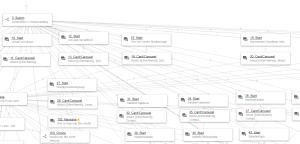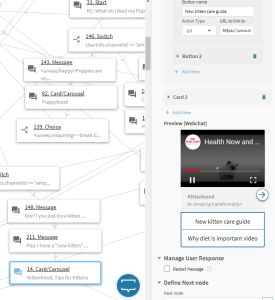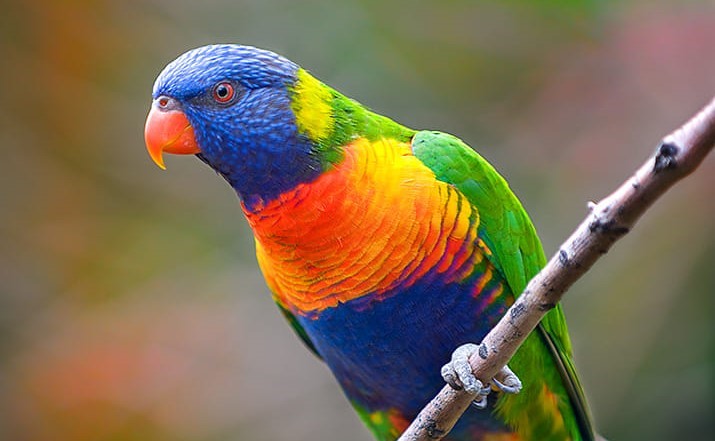Back in 1998, most veterinarians were horrified at the looming prospect of Dr Google. But he/she/they hasn’t been all bad, in that it’s helpful to have more informed clients.
You might say this next-generation of ChatGPT and its cousins (often dubbed ‘google on steroids’) is just another stronger, sexier aggregator of information.
But wait a second. At Virtual Vet Nurse, we’ve always seen a big, hairy, elephant-sized problem with any of these search technologies – whether old-school or new-school.
If we ask the basic question: does this technology serve to strengthen and protect the relationship between you (the vet) and your client?
Mostly, the answer is no.
At Virtual Vet Nurse, we love new technology. But we love the special nature of the vet-client relationship more. Combining these two things – and finding the sweet spot that works for the profession – is what we set out to do.
* * * * * * * * * * * * * * * * * * * * * * * * *
As an AI conversational chatbot, Virtual Vet Nurse is purpose-designed to strengthen and protect the vet-client relationship.
From day one, we baked these critical features into Virtual Vet Nurse:
#1 Your Virtual Vet Nurse will always lead clients back to your clinic.
What happens when your clients ask a question via google? They get delivered a dizzying array of options…from third-party telemedicine, other providers in your vicinity, online pharmacies, or advice from a pet forum. And that’s just start of it.
By contrast, your Virtual Vet Nurse will ONLY have conversations about your clinic. This is the equivalent of your front-desk human team member – they’d never recommend clients visit the clinic down the road, or to buy meds from a third-party.
And just like your best human front-desk team members, your Virtual Vet Nurse will always gently encourage your clients to:
- make a booking
- order refill meds
- pass on a message or query to the team
- follow up pre or post consult
- see your clinic’s latest promotions
- ask for feedback
- purchase a product from you
- and more…
In other words, with Virtual Vet Nurse, all conversational AI roads will lead back to your clinic – and nowhere else.
#2 Your Virtual Vet Nurse will always prioritise seeing a vet.
To protect your professional obligations, Virtual Vet Nurse will always advise the client to see their vet – either to book a routine appointment, or to go to the ER.
Virtual Vet Nurse will never say the equivalent of: ‘hey, based on this info I’ve found for you, I’d say that’s nothing to worry about!’
They will always follow the safest, standard narrative that human veterinary teams have always used: ‘If you’ve noticed a change in your pet, or you’re worried at all, we recommend you bring your pet to see us and/or visit your emergency clinic.’
Making sure every animal is seen by a veterinarian is a professional fundamental we never want to change – no matter how sophisticated the AI information becomes.
#3 Your Virtual Vet Nurse will always stay on script (one that’s veterinary-approved).
When your clients use search-based technologies, both old and new, you have no control over the answers they receive. Which can include dangerously off-base diagnoses, and just plain wrong advice (as seen in any public pet forum any day of the week).
By contrast, Virtual Vet Nurse operates from its own central ‘brain’, which has been written and approved by veterinarians. From this central brain, further personalization is added to create your clinic’s individual Virtual Vet Nurse. Using switches, we can also turn parts of the brain on or off, according to your clinic’s preferences. But importantly, the brain will never stray out of scope.
This means your Virtual Vet Nurse will always stay right on script – giving only your clinic information, your approved veterinary advice, and your approved actions.


So, how do we approach the elephant?
At Virtual Vet Nurse, we’re excited about the potential of ChatGPT (and whatever comes after it).
But the central question remains: how do we harness the power of these search technologies in order to strengthen the vet-client relationship?
We are currently developing a ‘vet-curated’ version of ChatGPT that sits within the Virtual Vet Nurse brain – where we utilise the power of search, but also ensure the flow of information is vet-approved and vet-centric.
This combines the best of both worlds. Where clients can search for information and it serves to bring them closer to their veterinary team.
It’s an exciting time to be working in the AI space.
Like to continue the discussion?
We’d love to know your thoughts, comments and feedback on the issue we’ve discussed here. Please drop us an email to: info@virtualvetnurse.com.
Photo by Joel Mbugua on Unsplash




